Beijing Railway Stations Guide: Which One Should You Choose?
Planning your journey through China’s capital? Choosing the right railway station in Beijing can make or break your travel experience. With seven major railway stations and multiple smaller ones, Beijing’s rail network has grown exponentially in recent years. We’ve navigated these stations countless times while guiding international travelers, and we’ll share our insider knowledge to help you make the right choice.
Table of Contents
Why Choosing the Right Beijing Railway Station Matters
Beijing’s railway system isn’t just about trains—it’s about timing, convenience, and your overall travel experience. Pick the wrong station, and you could spend hours navigating unfamiliar subway lines or face unexpected delays. Choose wisely, and you’ll enjoy seamless connections to your accommodation and attractions.
The city now operates seven major railway stations plus several smaller ones, each serving different destinations and purposes. Understanding these differences is crucial for any traveler planning to explore China by rail. Each station has developed its own character and specialties over the years, making station selection more important than many travelers realize.
Overview of Beijing’s Major Railway Stations
Beijing’s railway landscape reflects China’s rapid modernization. The newer stations boast cutting-edge facilities while historic stations maintain their traditional charm. We’ve observed how each station caters to different travel needs and passenger preferences during our years of guiding international visitors.
1. Beijing South Railway Station: The Modern Marvel
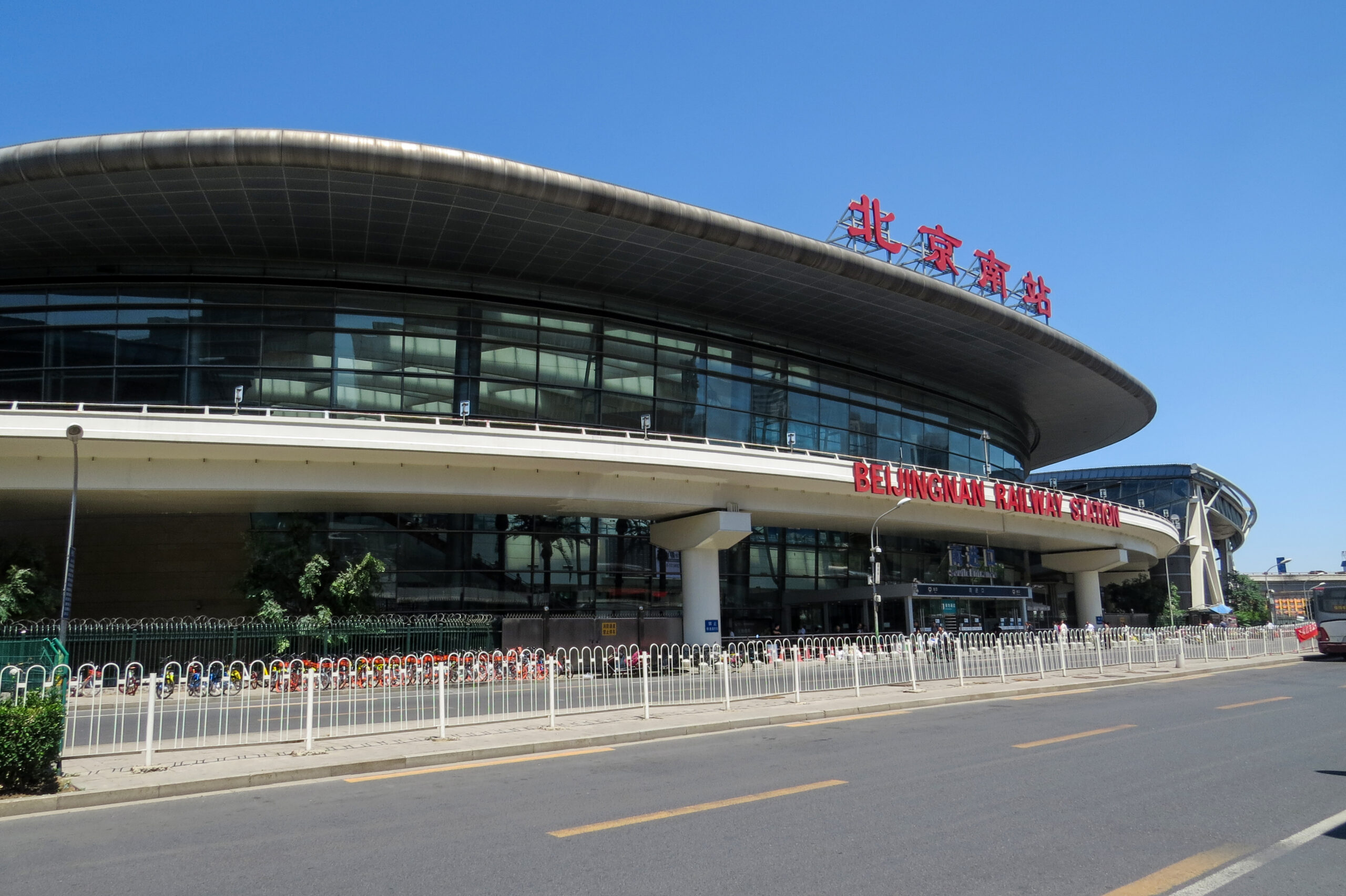
Beijing South stands as one of Asia’s largest and most modern railway stations. We consistently recommend this station for travelers heading to popular destinations like Shanghai and Nanjing due to its exceptional connectivity and services. The station’s modern 5-story oval architecture spans 320,000 square meters, creating an impressive gateway to southern China.
This station primarily serves high-speed trains to Shanghai, Nanjing, Tianjin, and other southern destinations. The CRH (China Railways High-speed) trains departing from here represent the pinnacle of Chinese rail technology. English-speaking staff and clear signage make navigation straightforward for international travelers.
The station connects directly to subway Lines 4 and 14, positioning it about 13 kilometers south of Tiananmen Square. Travelers can expect a 45 to 60-minute journey to central Beijing by subway. Popular destinations include Shanghai with journey times of 4.5 to 6 hours via G-trains, Tianjin in just 30 minutes, Jinan in 2 hours, and Nanjing in 3.5 hours.
Navigation and Experience: We’ve guided thousands of travelers through Beijing South, and it consistently impresses with its efficiency and design. The station’s oval shape might seem confusing initially, but the logical layout becomes apparent once you understand the flow. During peak travel seasons like Chinese New Year and Golden Week, Beijing South can process over 100,000 passengers daily. We’ve learned that early morning departures before 8 AM offer the smoothest experience with shorter security lines and easier navigation.
2. Beijing West Railway Station: The Gateway Giant

As Beijing’s busiest station by passenger volume, Beijing West serves as the gateway to some of China’s most popular tourist destinations. We often guide travelers here for their journeys to Xi’an’s Terracotta Warriors or Guangzhou’s connection to Hong Kong. The traditional Chinese gate tower architecture creates a distinctive atmosphere that bridges old and new China.
Beijing West specializes in high-speed trains to Xi’an, Guangzhou, Hong Kong, and western or southern China destinations. The station serves as the starting point for the Beijing-Guangzhou High-Speed Railway and connects to the Beijing-Kowloon Railway. This strategic position makes it the primary choice for travelers heading to southern China and Hong Kong.
Located 8 kilometers west of Tiananmen Square, the station connects to subway Lines 7 and 9. Travelers can reach central Beijing in 30 to 40 minutes by subway. Key destinations include Xi’an with journey times of 4.5 to 5.5 hours via G-trains, Guangzhou in 8 to 10 hours, Zhengzhou in 2.5 hours, Wuhan in 4 to 5 hours, and Hong Kong in 9 hours via Guangzhou connection.
Insider Perspective: Having navigated Beijing West countless times, we appreciate its strategic importance despite the occasional congestion. Beijing West processes the highest passenger volume of any station in Beijing. We’ve observed that Wednesday through Friday typically have lighter crowds, while weekends and holidays can be overwhelming. The station’s connection to both high-speed and traditional railways means mixing of passenger types, creating a diverse travel atmosphere.
3. Beijing Railway Station: The Historic Heart
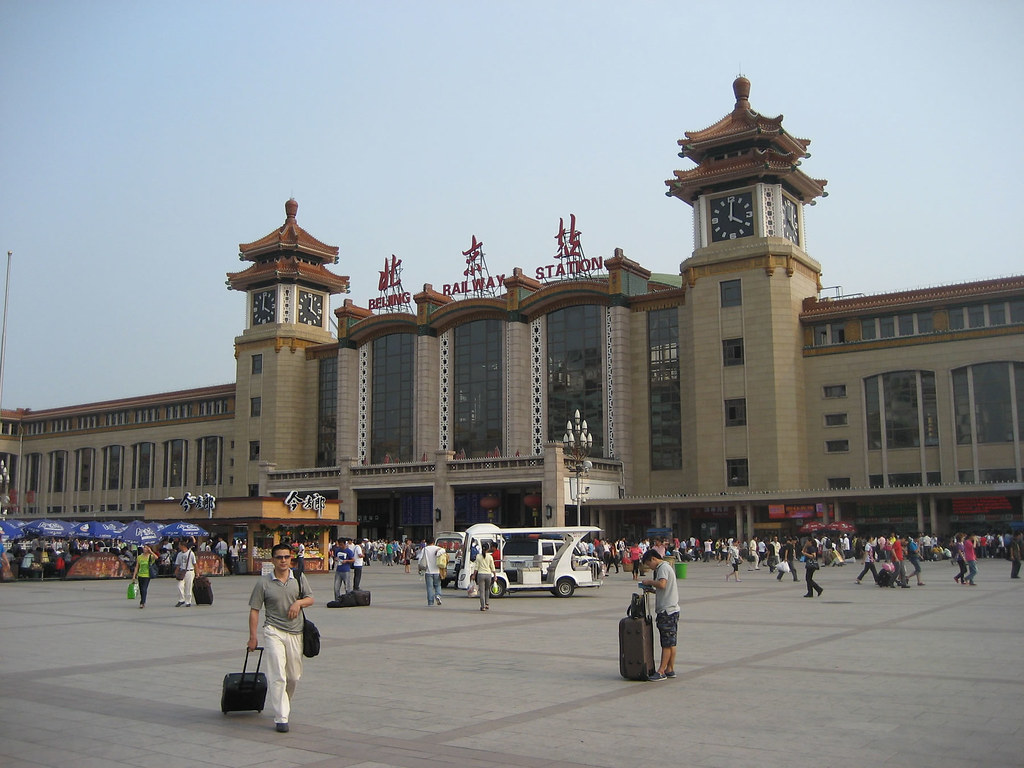
The historic Beijing Railway Station, though older, remains vital for international connections and traditional rail services. We guide many Trans-Siberian Railway enthusiasts and northeastern China travelers through this iconic station. The station holds special significance as Beijing’s original main station, maintaining classic Chinese architectural elements while serving modern travel needs.
This station specializes in traditional trains to northeastern China, Russia, Mongolia, and North Korea. International train services including the famous Trans-Siberian and Trans-Mongolian routes originate here. Traditional green train services to northeastern destinations also depart from this historic hub.
Positioned just 3 kilometers southeast of Tiananmen Square, the station connects to subway Line 2. Travelers can reach central Beijing in 15 to 25 minutes by subway. Popular destinations include Harbin with journey times of 8 to 12 hours, Shenyang in 4 to 6 hours, plus international routes to Ulaanbaatar, Mongolia and Moscow, Russia via the Trans-Siberian Railway.
International Travel Experience: Beijing Railway Station holds special significance for international rail travelers. We’ve escorted many Trans-Siberian Railway passengers through this station, and the experience differs markedly from modern stations. International passenger processing takes longer, but the station provides currency exchange facilities and English-speaking staff specifically for international routes. The traditional waiting areas offer historical charm that adds to the journey’s authenticity.
4. Beijing North Railway Station: The Great Wall Gateway

Recently renovated, Beijing North has become the go-to station for Great Wall visitors and travelers heading to the 2022 Winter Olympics venues. We regularly use this station for our Great Wall day trips, appreciating its manageable size and historic character combined with modern facilities.
Beijing North specializes in high-speed trains to the Great Wall at Badaling, Zhangjiakou, and northwestern destinations. The station serves as the primary access point for Badaling Great Wall visits and acts as the terminus for the Beijing-Zhangjiakou High-Speed Railway. The heritage building underwent modern renovations while maintaining its architectural integrity.
Located 5 kilometers northwest of Tiananmen Square, the station connects to subway Lines 2, 4, and 13 via Jishuitan or Xichimen stations. Travelers can reach central Beijing in 20 to 30 minutes by subway. Key destinations include Badaling Great Wall in just 1 hour, Zhangjiakou in 1.5 hours, and Hohhot in 2.5 hours.
Supporting Stations and Their Expanding Roles
Beijing’s railway network continues expanding with additional stations that serve specialized functions or provide overflow capacity during peak periods. These supporting stations increasingly play important roles in the city’s transportation ecosystem.
5. Beijing Daxing Station
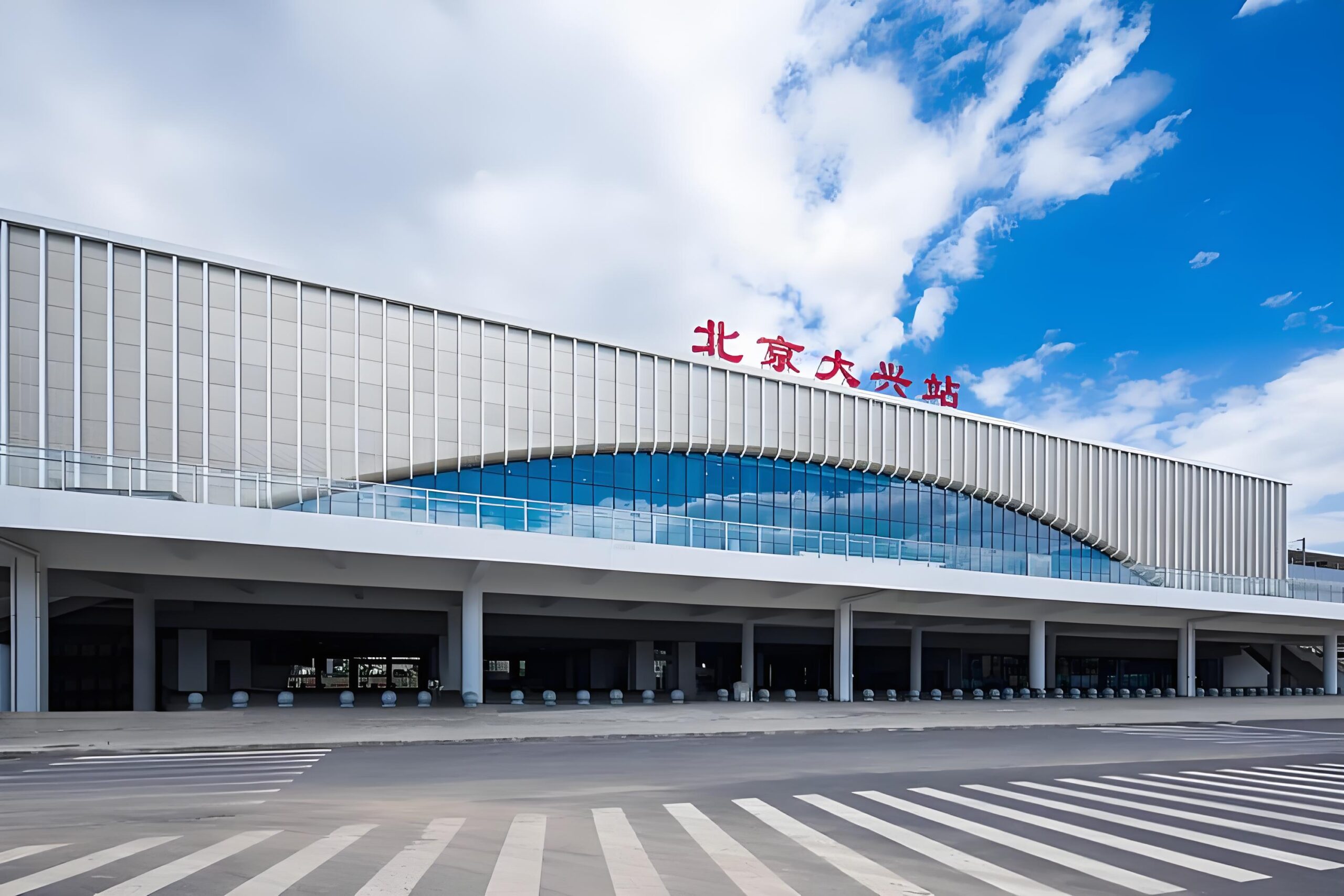
Beijing Daxing Station serves as a crucial transportation hub connecting Daxing International Airport with Beijing’s railway network. The station provides high-speed rail connections primarily to Beijing West Station in approximately 28 minutes, supporting the airport’s role as a major international gateway for travelers.
Located in the Daxing district, this modern station integrates seamlessly with airport operations while offering connections to various destinations across China. The facility features contemporary design with efficient passenger flow systems designed to handle both airport transfer passengers and regular railway travelers.
We find Beijing Daxing Station particularly useful for international travelers who need to connect between flights and train services. The station’s strategic positioning makes it an excellent choice for travelers staying near the airport or requiring quick access to Beijing West’s extensive high-speed network.
Key Advantages:
- Direct airport connectivity integration
- Modern facilities with contemporary design
- Quick connections to Beijing West Station
- Efficient passenger processing systems
- Strategic location for flight-train transfers
Best for: Airport connectivity and travelers needing integrated flight-rail services.
6. Beijing East Station

Beijing East Station operates as a specialized facility primarily focused on freight operations while maintaining limited passenger services. Located in Chaoyang District near Sihui, this station serves Beijing Suburban Railway Line Sub-center and regional routes connecting to northeastern destinations.
The station functions quite differently from Beijing’s major passenger hubs, with restricted operating hours and limited amenities. Built originally in 1938, Beijing East maintains historical significance while adapting to modern freight and suburban service needs.
We rarely recommend Beijing East Station for international travelers due to its specialized focus on freight operations and limited passenger facilities. The station primarily serves local commuters traveling on suburban lines rather than long-distance tourism routes.
Key Characteristics:
- Primary freight operations with limited passenger services
- Restricted ticket office hours throughout the day
- Suburban railway connections to eastern districts
- Historical significance dating to 1938
- Future subway Line 28 connections planned
Best for: Local suburban travel and specific regional connections to eastern areas.
Beijing Chaoyang Station represents a significant new addition that began full operations with subway Line 3 connection from December 15, 2024. The station serves as the starting point for the Beijing-Harbin Railway with high-speed trains to northeastern destinations including Changbaishan. This modern facility complements Beijing Railway Station’s traditional northeastern services while offering more contemporary amenities.
The station’s strategic location in eastern Beijing provides convenient access for travelers staying in the Chaoyang business district. Future Line 20 connections will further enhance accessibility, making this station increasingly attractive for northeastern China destinations. We anticipate this station becoming more popular among international travelers as its services expand.
Key Features:
- Modern facilities with contemporary design
- High-speed services to northeastern destinations
- Fresh subway Line 3 connections as of December 2024
- Less crowded than traditional northeastern route hub
- Strategic location for business district access
7. Beijing Fengtai Station
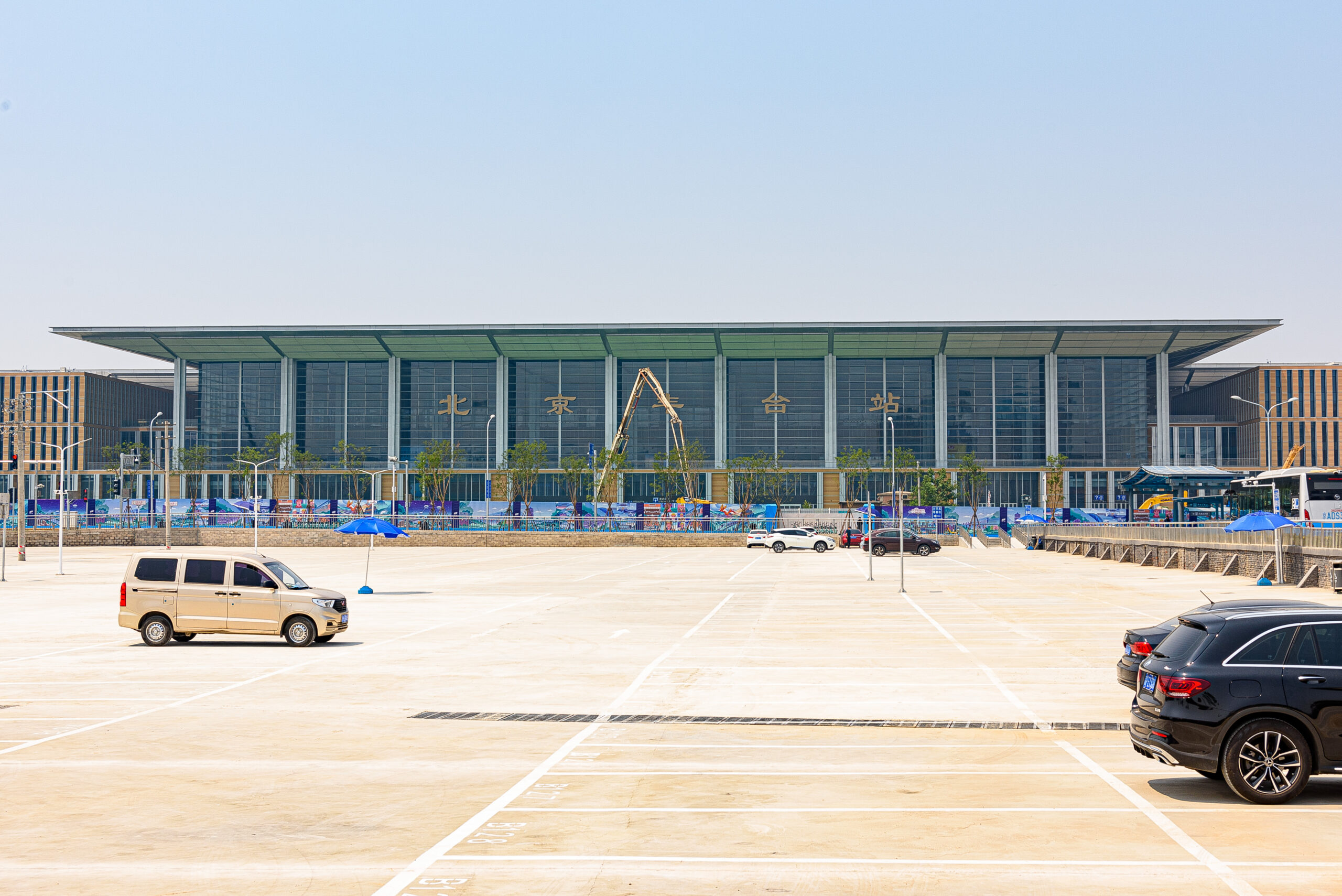
Beijing Fengtai Station reopened in 2022 after extensive renovation of the historic Qing Dynasty-era station. The facility now handles normal speed trains to Shanghai, Guangzhou, Changsha, Datong, Suzhou, Nanjing, and Hangzhou. This represents Beijing’s strategy to distribute passenger loads across multiple stations while preserving railway heritage.
The station’s renovation successfully blends historical architecture with modern functionality. We’ve observed that Fengtai Station appeals to travelers seeking authentic railway experiences combined with practical modern services. The station’s mixed route offerings provide alternatives to Beijing West’s high-speed services when scheduling flexibility matters more than speed.
Strategic Advantages:
- Historic character with modern amenities
- Alternative routes to popular southern destinations
- Generally less crowded than major stations
- Multiple subway line connections planned
- Good option for flexible travel schedules
8. Beijing Chaoyang Station
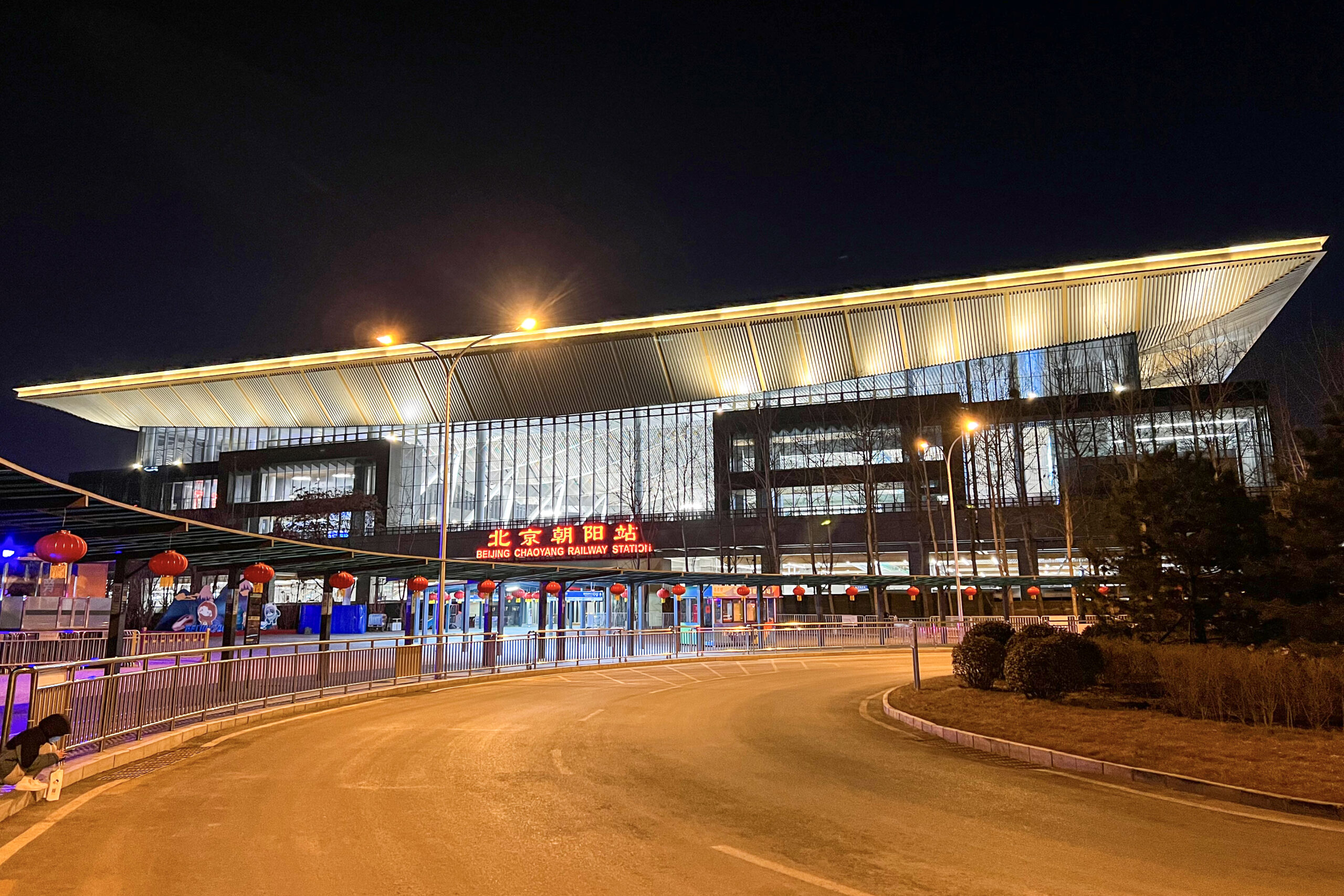
Beijing Chaoyang Station represents a significant new addition that began full operations with subway Line 3 connection from December 15, 2024. The station serves as the starting point for the Beijing-Harbin Railway with high-speed trains to northeastern destinations including Changbaishan. This modern facility complements Beijing Railway Station’s traditional northeastern services while offering more contemporary amenities.
Located in eastern Beijing’s Chaoyang District, the station provides convenient access for travelers staying in the business district area. The facility features modern design with comprehensive passenger services including shopping, dining, and comfortable waiting areas. Future Line 20 connections will further enhance accessibility, making this station increasingly attractive for northeastern China destinations.
We anticipate Beijing Chaoyang Station becoming more popular among international travelers as its services expand and subway connections improve. The station offers a modern alternative to Beijing Railway Station for northeastern routes, though it currently handles fewer international services.
Key Features:
- Modern facilities with contemporary design
- High-speed services to northeastern destinations including Changbaishan
- Fresh subway Line 3 connections operational from December 2024
- Less crowded than traditional northeastern route hub at Beijing Railway Station
- Strategic location for business district access and eastern Beijing hotels
Best for: Northeastern China destinations with preference for modern facilities over historic charm.
Strategic Station Selection Guide
Choosing by Destination Direction
Understanding Beijing’s railway geography simplifies station selection significantly. The following table provides a quick reference for matching your destination with the optimal station choice:
Destination Direction | Primary Station | Secondary Option | Travel Time to City Center | Best For |
|---|---|---|---|---|
East & Southeast (Shanghai, Nanjing, Hangzhou) | Beijing South | Beijing Fengtai | 45-60 minutes | Modern facilities, high-speed trains |
South & Southwest (Guangzhou, Xi’an, Wuhan) | Beijing West | Beijing Fengtai | 30-40 minutes | Popular tourist destinations |
Northeast (Harbin, Shenyang, Dalian) | Beijing Railway | Beijing Chaoyang | 15-25 minutes | Traditional trains, central location |
North & Northwest (Great Wall, Zhangjiakou) | Beijing North | Beijing Daxing | 20-30 minutes | Great Wall day trips |
International (Russia, Mongolia, North Korea) | Beijing Railway | – | 15-25 minutes | Cross-border services only |
Airport Connections | Beijing Daxing | Beijing West | 28 minutes to West | Airport rail connectivity |
Regional/Mixed Routes | Beijing Fengtai | Beijing East | 35-45 minutes | Flexible schedules, heritage |
Eastern and southeastern destinations like Shanghai, Nanjing, and Hangzhou primarily depart from Beijing South, requiring 45 to 60 minutes travel time from central Beijing. Southern and southwestern routes to Guangzhou, Xi’an, and Wuhan concentrate at Beijing West, positioning travelers 30 to 40 minutes from the city center.
Northeastern destinations including Harbin, Shenyang, and Dalian traditionally use Beijing Railway Station, though some services now operate from Beijing Chaoyang. These stations offer 15 to 25 minutes access to central Beijing. Northern and northwestern routes, particularly Great Wall access and Zhangjiakou connections, center on Beijing North with 20 to 30 minutes travel time to downtown areas.
International routes exclusively operate from Beijing Railway Station, making it the only choice for Trans-Siberian Railway connections and other cross-border services. This centralized approach simplifies decision-making for international rail travelers.
Tailoring Choice to Travel Priorities
First-time visitors should prioritize Beijing South or Beijing West due to their modern facilities, English signage, and comprehensive services. These stations offer less overwhelming experiences compared to the historic Beijing Railway Station while providing clear subway connections and extensive amenities.
Great Wall day trip enthusiasts should focus on Beijing North Station, which offers direct high-speed trains to Badaling in just one hour. The station’s convenient subway connections and less crowded environment create optimal conditions for day trip logistics. The historic charm combined with modern efficiency enhances the overall Great Wall experience.
International route travelers have no choice but Beijing Railway Station, but this limitation actually enhances the journey’s authenticity. The traditional atmosphere perfectly complements classic rail journeys like the Trans-Siberian Railway. The central location and easy subway access add practical benefits to the historical significance.
Convenience-focused travelers should consider their accommodation location when selecting stations. Staying near subway Line 4 makes Beijing South optimal, while locations near Lines 7 or 9 favor Beijing West. Central Beijing hotels naturally align with Beijing Railway Station, and northern area accommodations work best with Beijing North connections.
Deep Dive: Station-Specific Strategies
Mastering Beijing South Railway Station
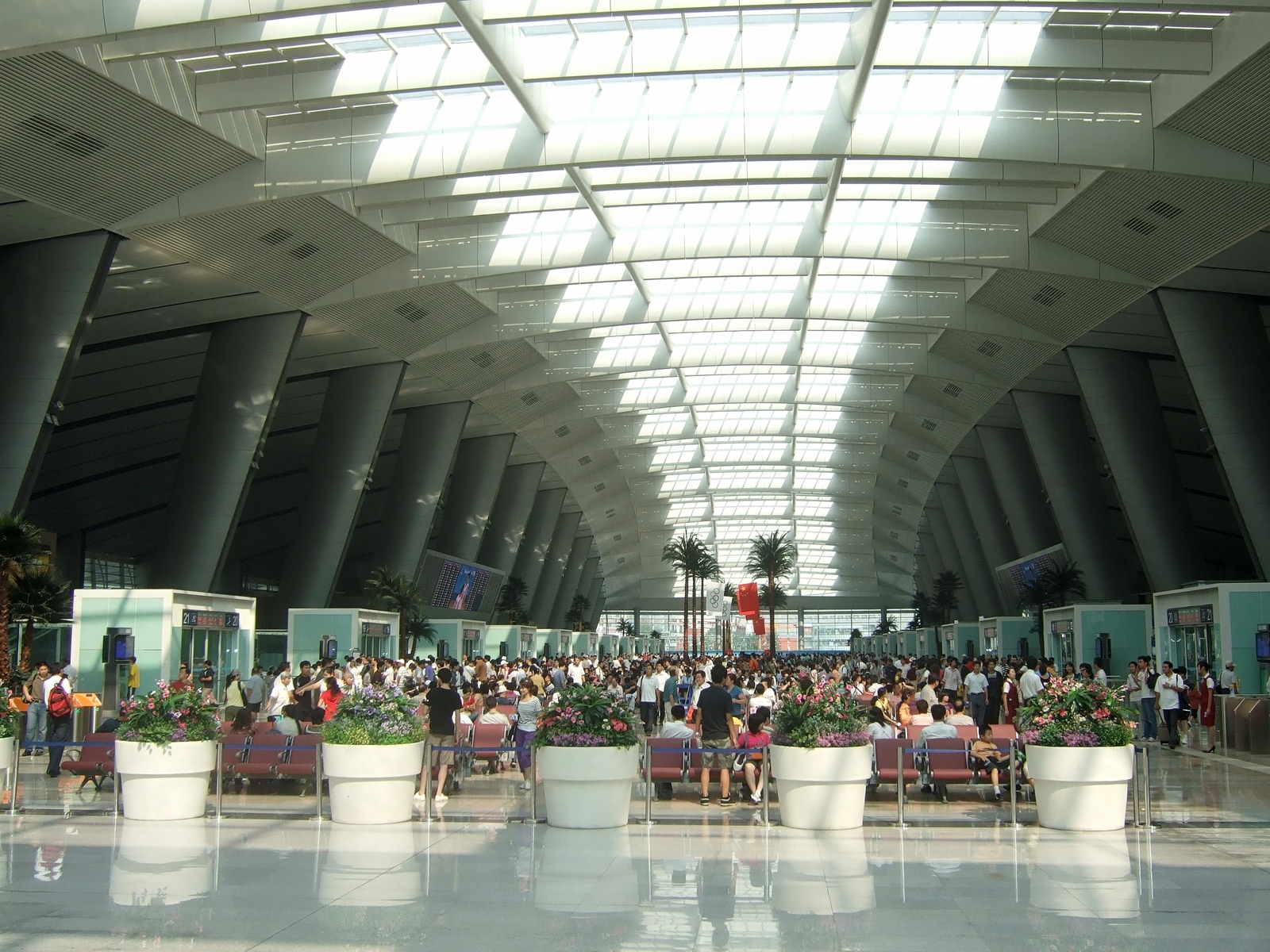
Beijing South’s modern design can initially confuse travelers, but understanding the flow reveals its logical efficiency. We recommend arriving 90 minutes before departure for international travelers to allow adequate time for security screening and navigation. The central information desk provides English assistance, while food courts occupy the 2nd and 3rd floors. The subway entrance connects directly to basement level, streamlining transfers.
The station’s capacity to process over 100,000 daily passengers during peak seasons demands strategic timing. Early morning departures before 8 AM consistently offer smoother experiences with shorter security lines and easier navigation. We advise downloading offline maps before arrival and keeping passports and tickets easily accessible. Extra time allowances for subway connections during rush hours prevent missed departures.
Navigating Beijing West Railway Station

Beijing West’s traditional architecture creates unique atmosphere, but the sheer passenger volume demands careful planning. The north entrance provides optimal subway connections, while restaurants cluster on the second floor for convenient dining options. Taxi pickup points on the south side offer alternative transportation when subway lines are crowded.
Processing the highest passenger volume of any Beijing station means timing becomes crucial at Beijing West. Wednesday through Friday typically see lighter crowds, making midweek travel more pleasant. Weekend and holiday periods can become overwhelming, requiring additional preparation time. The station’s dual role serving both high-speed and traditional railways creates diverse passenger mixing that adds to the travel experience.
We recommend booking tickets online to skip physical ticket counters and using mobile payment systems for faster transactions. Avoiding peak hours from 7 to 9 AM and 5 to 7 PM when possible reduces stress levels significantly. Consider staying at nearby hotels if departing on early morning trains to minimize travel complications.
Experiencing Beijing Railway Station’s Character
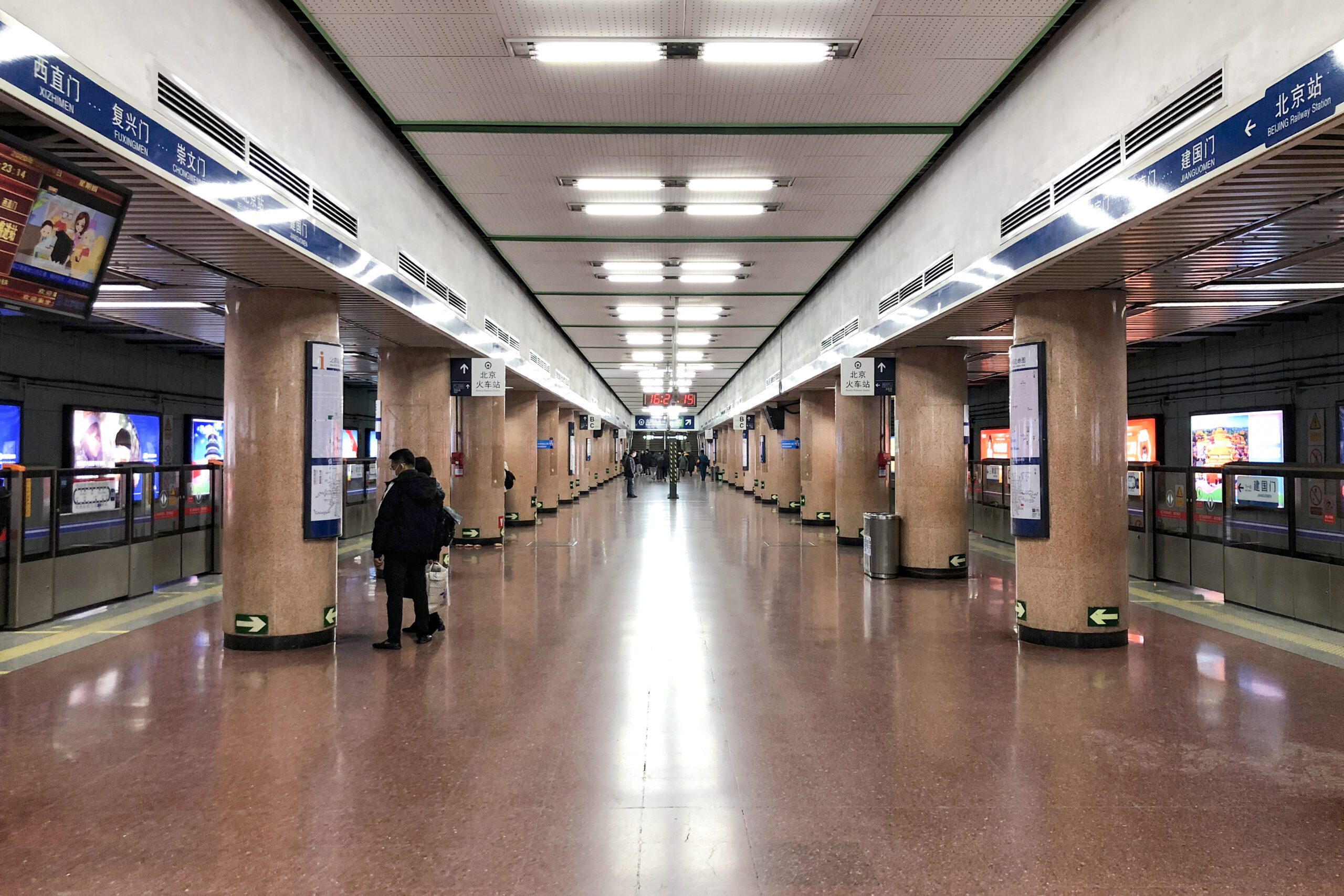
Beijing Railway Station offers a markedly different experience from modern facilities, particularly for international rail travelers. International passenger processing takes longer due to additional documentation requirements, but the station provides on-site currency exchange and English-speaking staff specifically trained for international routes. Traditional waiting areas maintain historical charm that enhances journey authenticity.
Arriving three hours before international train departures allows adequate time for visa checks, customs procedures, and platform access. The station’s compact size compared to modern facilities actually simplifies navigation once you understand the layout. Restaurant options focus on traditional Chinese cuisine rather than international chains, providing authentic local dining experiences.
We’ve observed that Beijing Railway Station attracts more adventurous travelers seeking authentic experiences rather than pure convenience. The atmosphere reflects China’s railway heritage while serving practical modern needs. International rail enthusiasts particularly appreciate the historical continuity represented by this classic terminal.
Optimizing Beijing North Railway Station

Beijing North’s recent renovations successfully balance historical preservation with modern functionality. The manageable size prevents the overwhelming feeling common at larger stations while providing necessary amenities for comfortable travel. Great Wall day trip logistics work particularly well from this station due to convenient timing and direct routing.
The heritage building’s architectural details add character to the travel experience without compromising efficiency. Modern facilities include updated waiting areas, improved dining options, and enhanced accessibility features. The station’s specialized role serving northwestern destinations means fewer competing passenger flows and more focused services.
We recommend Beijing North for travelers prioritizing scenic routes and cultural experiences over pure speed. The journey to Badaling Great Wall showcases beautiful countryside scenery that complements the destination experience. Station staff often provide local tourism information that enhances overall trip value.
Practical Considerations and Tips
Timing Your Station Choice
Peak travel periods dramatically impact station experiences across Beijing’s railway network. Chinese New Year, Golden Week holidays, and summer vacation periods create massive passenger surges that strain even modern facilities. We’ve learned to adjust recommendations based on travel timing to optimize passenger experiences.
Spring Festival travel rush, known locally as Chunyun, represents the world’s largest human migration. During this period, we strongly recommend booking tickets well in advance and allowing extra time for all station procedures. Modern stations like Beijing South and Beijing West handle crowds more efficiently than older facilities.
Summer travel season brings different challenges with international tourism peaks coinciding with domestic vacation periods. Air conditioning capabilities vary between stations, making newer facilities more comfortable during hot weather. Planning departure times to avoid midday heat improves overall travel comfort significantly.
Weather Impact on Station Selection
Beijing’s climate extremes influence station choice in ways many travelers don’t consider. Winter temperatures can drop well below freezing, making covered walkways and heated waiting areas crucial for comfort. Summer heat and humidity create different priorities around air conditioning and shade availability.
Beijing South and Beijing West provide superior climate control due to modern HVAC systems and enclosed designs. Beijing Railway Station’s older infrastructure may struggle during extreme weather periods, though its traditional architecture offers unique charm. Beijing North’s renovation addressed climate concerns while preserving historical character.
Subway connections become particularly important during harsh weather when taxi availability decreases and walking distances matter more. Covered passages between stations and subway platforms provide weather protection that significantly improves travel experiences during extreme conditions.
Accessibility and Special Needs
Modern stations generally provide superior accessibility features for travelers with mobility challenges or special needs. Beijing South leads in accessibility with comprehensive elevator systems, wheelchair access, and barrier-free routing throughout the facility. Beijing West offers similar modern accessibility though with occasional crowding challenges.
Beijing Railway Station’s historic design presents some accessibility limitations despite recent improvements. The station management has added elevator access and accessible restrooms, but navigation may require additional assistance for travelers with mobility impairments. Beijing North’s renovation specifically addressed accessibility compliance while preserving architectural heritage.
We always recommend contacting station services in advance for travelers requiring special assistance. Staff training varies between stations, with newer facilities generally providing more comprehensive support services. Language support also varies, making pre-arranged assistance particularly valuable for international travelers with special needs.
Frequently Asked Questions

Which Beijing railway station is closest to the Forbidden City?
Beijing Railway Station sits closest to the Forbidden City and Tiananmen Square, approximately 3 kilometers southeast. The subway Line 2 connection provides direct access to central Beijing attractions in 15 to 25 minutes. This proximity makes Beijing Railway Station ideal for travelers planning to explore central Beijing immediately upon arrival.
Can I buy tickets at the station, or must I book online?
All Beijing railway stations offer ticket purchasing services, though online booking through official platforms or authorized agents often provides better options and avoids queuing time. We recommend online booking for popular routes and peak travel periods, while last-minute or flexible travel can utilize station ticket counters. International credit cards work for online bookings, though cash remains necessary for some station purchases.
How early should I arrive at Beijing railway stations?
Arrival timing depends on your station choice and travel type. Modern stations like Beijing South and Beijing West require 90 minutes for domestic high-speed trains and 2 hours during peak periods. Beijing Railway Station needs 3 hours for international trains due to additional customs and visa procedures. Beijing North typically requires only 60 minutes due to its smaller size and specialized services.
Are there luggage storage facilities at Beijing stations?
All major Beijing railway stations provide luggage storage services, though capacity and pricing vary by location. Beijing South offers the most comprehensive luggage services with both short-term and long-term storage options. Beijing West provides adequate storage but can reach capacity during peak periods. Beijing Railway Station offers basic storage services, while Beijing North has limited but sufficient capacity for its passenger volume.
Which station offers the best food options?
Beijing South provides the most diverse dining options with international chains, traditional Chinese restaurants, and quick service options across multiple floors. Beijing West offers extensive dining though with more focus on local cuisine and regional specialties. Beijing Railway Station provides basic dining options with emphasis on traditional Chinese food. Beijing North offers renovated dining facilities suitable for day trip travelers with quick service options.
How reliable are the subway connections from each station?
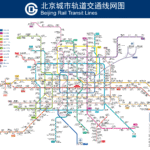
Subway reliability varies by station location and line capacity. Beijing South connects to Lines 4 and 14 with generally reliable service though potential crowding during rush hours. Beijing West connects to Lines 7 and 9 with good reliability despite high passenger volumes. Beijing Railway Station’s Line 2 connection offers excellent reliability and central city access. Beijing North requires connections through Jishuitan or Xichimen stations, adding transfer complexity but maintaining reasonable reliability.
Conclusion: Making Your Beijing Railway Station Choice
Selecting the right Beijing railway station transforms your China travel experience from stressful navigation to smooth journey initiation. We’ve seen countless travelers benefit from proper station selection, while others struggle with poor choices that create unnecessary complications.
Consider your destination first, then factor in your accommodation location, travel timing, and personal preferences for modern convenience versus historical character. Beijing South excels for southern destinations with modern amenities, while Beijing West serves as the gateway to western China with traditional architecture. Beijing Railway Station remains essential for northeastern routes and international connections, while Beijing North provides specialized Great Wall access.
Remember that Beijing’s railway system continues evolving with new stations and improved connections regularly coming online. Current construction projects will enhance accessibility and reduce congestion across the network. However, the fundamental character and specialization of each major station will likely remain consistent for years to come.
Plan ahead, arrive early, and embrace the journey as part of your China adventure. The right station choice sets the tone for memorable travels across this vast and fascinating country. Whether you choose cutting-edge efficiency or traditional charm, Beijing’s railway stations provide gateways to extraordinary destinations throughout China and beyond.








